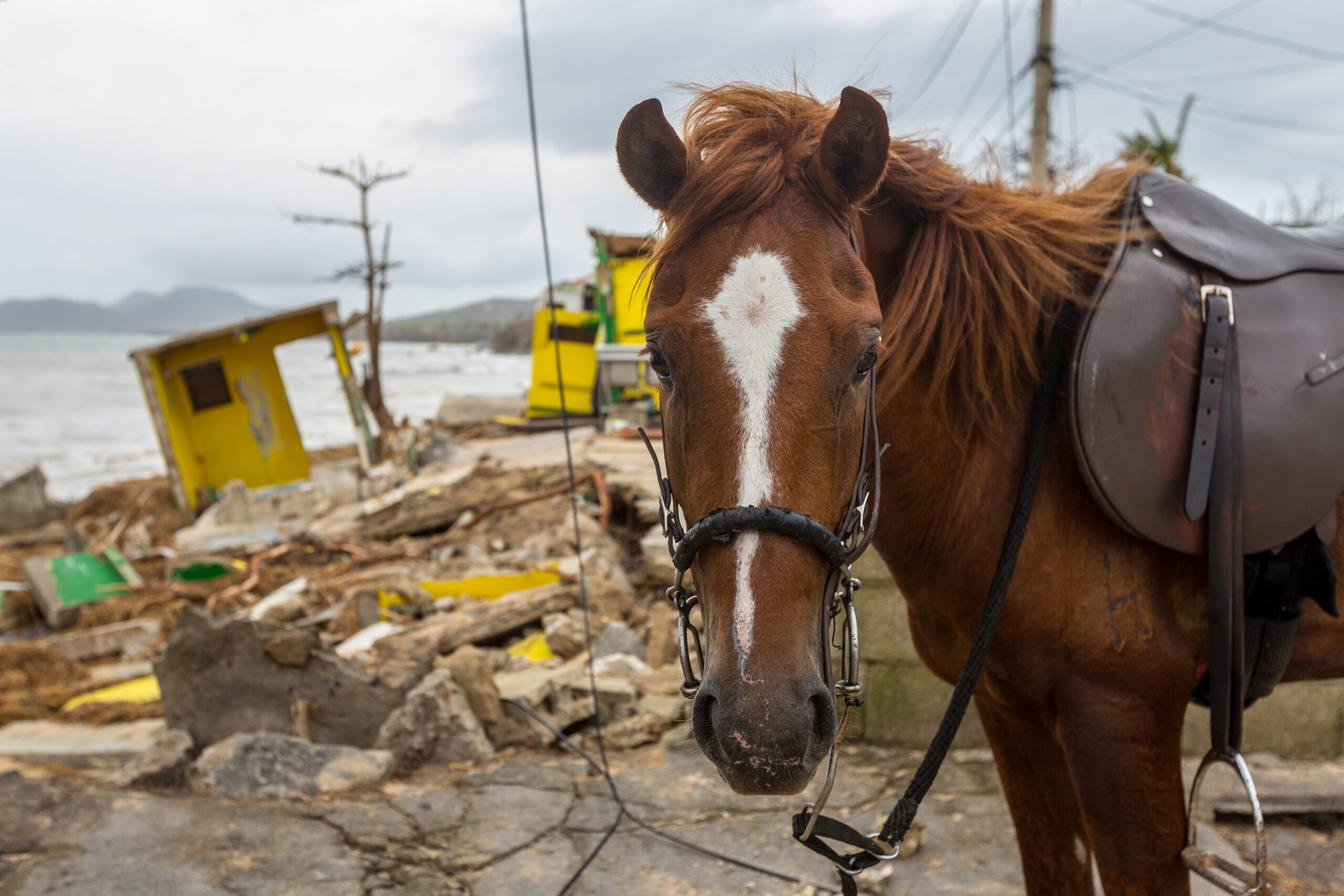Last Updated on February 21, 2025 by Teri Rehkopf
Natural disasters can have a huge impact on both humans and animals. Understanding the kinds of natural disasters that could strike is half the battle for horse owners. Whether it’s wildfires, floods, hurricanes, or tornadoes, each brings its own set of challenges. Preparing for these events means knowing your area’s most likely threats and tailoring your emergency plans accordingly.
I’ve been in wildfires that have gotten close to our property and in many Florida hurricanes and Hurricane Dora’s associated flood. That’s why I write about disasters now. I was raised in a survivalist homestead and am now a prepper. So, does your location or where you live matter in a disaster?
Does Where You Live Matter in a Disaster?
Location matters a lot. Your risk level goes up if you’re in a floodplain or near a fire-prone forest. It’s not just about where you live but what your property looks like. I’ve mostly lived in wooded areas with some pastures. We aren’t in a floodplain, but the chances of fires scare me.
Open plains might offer fewer hazards than wooded areas but lack natural shelter against storms like tornados. Knowing your surroundings will give you a head start when planning. Hurricanes are moving inland now because of climate changes, so this is a new disaster you may need to plan for,
It’s not all about the lay of the land, though.
Break down your setup —
- barns,
- Barns need to be sturdy enough to withstand high winds or heavy snow.
- pastures,
- Pastures should be clear of flying debris.
- fencing,
- Fences should be designed to allow quick release in case of evacuation.
— and pinpoint vulnerabilities.
A solid property assessment reveals gaps in your disaster fortification.
Beyond the physical risk, don’t forget the psychological and emotional toll a disaster can take. Preparing isn’t purely practical; it’s also about peace of mind. Being mentally ready makes your response more effective. Knowing you’re prepared to protect your horses can reduce anxiety and help you act confidently under pressure.
Emergency Planning and Preparedness
A solid emergency plan could distinguish between chaos and control when disaster strikes. While the unpredictable nature of these events can’t be understated, an organized response can be a huge relief. It’s crucial to have a detailed disaster response strategy tailored for your horses.
- Start with the basics: Identify the safest place in your area—a local fairground or equestrian center might serve as an emergency shelter. Plan evacuation routes that avoid common traffic snags. These routes should be well-marked and regularly practiced with your horses to minimize stress during evacuation.
- Emergency contacts are vital. Keep a list that includes:
- your vet,
- local animal shelters,
- and other horse owners who can offer assistance.
- Have a buddy system, someone you trust who can help or provide shelter for your horses if needed.
- Stockpiling essentials is another key element. Ensure you have enough:
- feed,
- water,
- and medical supplies to sustain your horses for several days.
- Don’t forget about items like:
- halters,
- lead ropes,
- and first aid supplies—things you might need on the fly.
Lastly, take a moment to double-check all your paperwork. Identification documents, ownership proofs, and veterinary records must be current and accessible.
- Microchipping your horse is smart, and it can make identification easier if chaos sets in.
- Having photographs of each horse can also be helpful for identification purposes.
Safeguarding Equine Welfare During a Disaster
When disaster hits, keeping your horses safe should be at the top of your mind. Quick and efficient action can make all the difference in minimizing risk. Horse owners should aim to have strategies in place long before any warning signs appear.
Safe transportation is essential:
- Trailers should be ready to go:
- with hitches checked
- and tires inflated.
- Practice loading your horses regularly; familiarity can help reduce their stress and speed up evacuation.
- In high-stress situations, the more seamless they feel, the better.
Horses can quickly become anxious during chaotic events:
- Keeping them calm is a priority, so having calming techniques ready is beneficial.
- Sometimes, just talking softly can soothe nerves.
- Other times, a lightweight blanket or the presence of another familiar horse might do wonders.
Technology can be a friend in these scenarios:
- GPS trackers for horses provide peace of mind if evacuations become chaotic, allowing you to locate them quickly.
- Emergency apps that send alerts keep you updated on evolving situations, letting you adapt quickly to new information.
Having some innovative tools in your toolkit can help, too:
- Solar-powered chargers ensure your tech stays operational when the power goes out.
- Portable horse corrals offer temporary containment when stables aren’t accessible.
- Thinking outside the box when assembling your disaster kit could be a lifesaver.
Community Involvement and Resources
When disaster looms on the horizon, having a supportive network can be incredibly empowering. Your local and online equine communities are there to lean on, providing information, resources, and perhaps even a comforting sense of camaraderie when things get tough.
Look to rescue organizations and local authorities as valuable allies. Establishing connections with these groups before disasters occur means knowing exactly who to call and what resources are available when you need them most. This collaboration can streamline efforts and provide expert guidance.
Resources for disaster preparedness:
- Halterproject.org: Offers emergency preparedness resources for equine rescue owners
- ASPCApro: Offers resources for preparing for and responding to disasters impacting equines
- Homes for Horses Coalition: Offers resources to help equine rescues prepare for disasters
- The Foundation for the Horse: a 501(c)(3) organization incorporated in 1994 by the American Association of Equine Practitioners.
Your community resources aren’t just about immediate disaster responses—they’re about preparing together:
- Organize group meetings to
- discuss strategies,
- share tips,
- and plan joint emergency drills.
This creates a collective safety net and reinforces bonds with others facing the same risks.
Establishing a mutual aid network within your community ensures that support is available when needed most.
- Swap contact details with other horse owners,
- offering help
- and seeking help in return.
- This reciprocity enhances everyone’s preparedness and confidence.
Online forums and social media can broaden your community reach, connecting you with horse owners from different areas dealing with similar challenges. These platforms are a treasure trove of ideas, solutions, and real-time updates when disaster strikes.
Recovery and Post-Disaster Strategies for Horse Owners
After a disaster, the road to recovery can be a long one, but strategic actions can help get you and your horses back on solid ground. It’s about piecing together what’s been lost while reinforcing what’s survived.
Start by assessing your and your horses’ immediate needs:
- Inspect your property for hidden dangers like
- fallen fences,
- contaminated water,
- or lingering smoke, ensuring every space is safe before allowing your horses to return.
Financial strain is a common hurdle post-disaster.
- Look for financial assistance options from non-profits dedicated to equine welfare
- or government aid programs.
- These resources can help cover the costs of
- repairs,
- medical care,
- and feed restocks.
The aftermath of a disaster is also a learning opportunity.
- Take stock of what worked,
- what didn’t,
- and where improvements can be made.
- Revise your disaster response plan with newfound insights to bolster preparedness for the future.
In the end, emotional recovery matters just as much. Both horses and humans need to heal from the stress of a disaster. Give yourselves time and space to adjust, and seek support from your community if needed—whether that’s through talking it out or lending a helping hand.
Have you made your disaster plan? Have you been in a disaster and used your plan? Was it complete, or did you make adjustments to it? Please reply in the comments section below. I’d love to hear your perspective/issues/concerns and I always reply.

